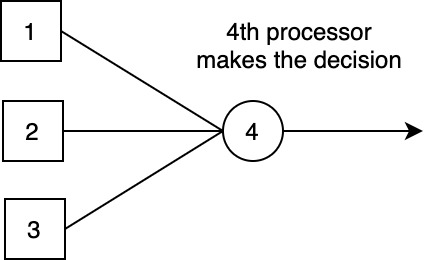1. Parallel Computation
Jan 11, 2021
Sequential vs. parallel worlds
According to Leslie Vallant, success of sequential computation is based on 3 factors:
- Universal notation - high level languages - studied in algorithms/programming
- Simple and reliable model - studied in comp org./architecture
- if possible to do on a Turing machine, it may be realizable on a real computer
- Efficient and effective mapping - compilers
- compilers run in linear time
In parallel computation:
- no universal language/notation
- no simple model
- no efficient mapping
Performance always depends on architecture and algorithms cannot be separated from architecture.
2 generals problem
Goal: agree on a time to meet by exchanging messages
Setting: messages may or may not get through communication channel. Assume a finite solution exists. The very last message is to confirm receipt.
Let \(k\) be the optimal (minimum) number of messages needed to reach goal. This leads to a contradiction: if \(k\) is minimum, message to agree on time would have had to occur at time \(k-1\), \(k-2\), \(k-3\) ... etc. Cannot reliably solve in presence of dynamic failures.
Triple modular redundancy (TMR)
Have 3 machines solve the same problem and choose majority answer.

This doesn't work with 3 processors if there is a malicious/failing processor, proof by Leslie Lamport (see Paxos).